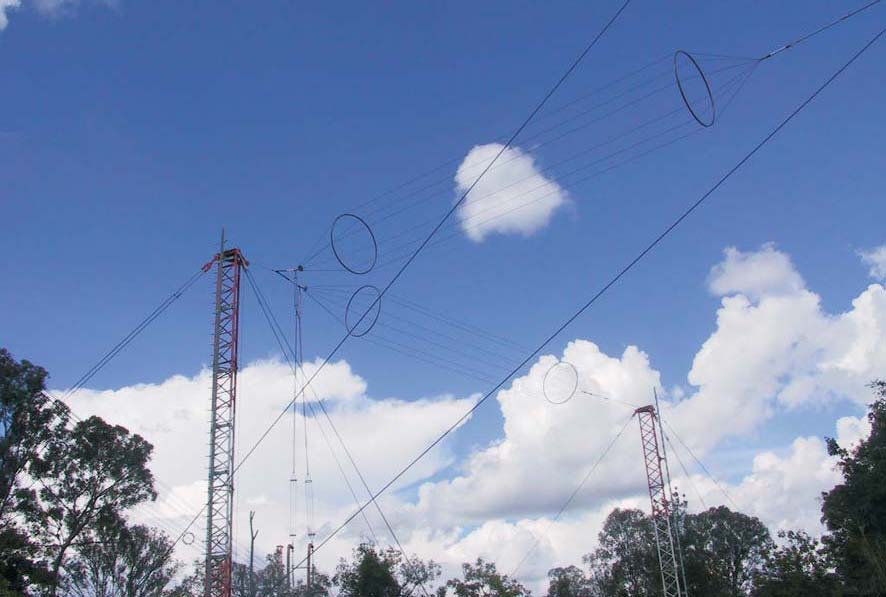| GENERAL DESCRIPTION |
 Omni-directional transmitting antennas are most favored when it is required to provide same time coverage of areas surrounding the transmitter site which extend up to a radius of 1300 km, depending on the transmitter power.
Omni-directional transmitting antennas are most favored when it is required to provide same time coverage of areas surrounding the transmitter site which extend up to a radius of 1300 km, depending on the transmitter power.| TECHNICAL SPECIFICATIONS | |||||||
| Antenna Type | Range (in km) | Frequency Range | Radiation Pattern | Typical Gain (dBi) | |||
| Up to 1300 | 1000 to 4000 | 2000 to 6000 | 3000 to 8000 | ||||
| HQ 1/h (Quadrant) |
X | max. 2 adjacent bands in the SW range | omni-directional | 8 - 10 | |||
| The height (h) is according specific performance requirements. The stated range is assuming single-hop transmission and can be seen as a rough guideline for design purposes. In any case the range is dependent on specific ionospheric propagation conditions. |
|||||||
| Specifications may change without notice | |||||||